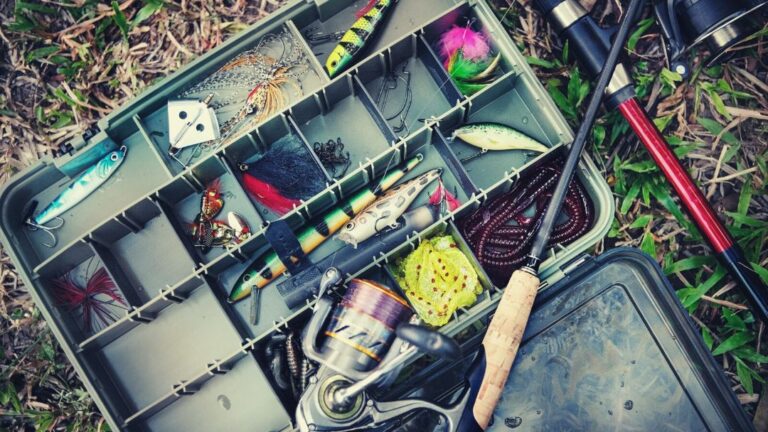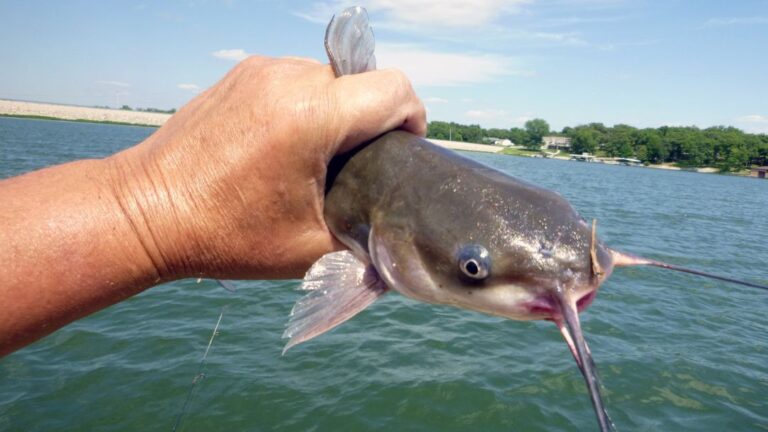How to catch bass in the winter – Tips and Techniques

Catching the winter bass is quite a challenge for anyone at so many levels. On a personal level, it requires a calculated approach, patience, and endurance. At the skill level, it takes a lot more than the basic understanding of fishing alone.
To catch bass in the winter, you need to know what cold weather does to water temperatures and the fish therein. You also need to know how to prepare yourself for the challenge, how to time your activity according to the weather, how to survey water bodies, where to look for the winter bass, and how to bait it. Finally, you need to know the risks involved and how to take care of your own safety during the activity.
Here is a quick guide to help you prepare for your bass catching expedition this winter.
Bass behavior during the winter
Bass, like all fish, are cold-blooded creatures. This means they have the ability to adjust their body temperatures to that of their environment.
During warmer seasons, they are found in abundance near the surface as they are actively preying and spawning. During the winter season, however, they vanish deep into the water, where they are much harder to find.
In temperatures of around 50 degrees and lower, the bass goes down into the deeper in their habitat and into hibernation which most cold-blooded creatures are known for. Their heartbeat, respiration, and metabolism slow down considerably. They no longer need regular amounts of food and now require days to digest which took them hours in the summer.
With reduce, feeding comes diminished movement.
Due to the cold outside and the resulting bodily processes inside, bass becomes lethargic and lies low, suspended in the water column and pretty much immobile.
This relocation to deeper points, lower need for food, and their immobility during hibernation is what makes the winter bass extremely elusive and hard to catch.
This elusiveness adds up to the harsh and erratic weather conditions. Furthermore, the unique topography and challenges of every water body, the murkiness and clarity levels, changing water flow and speeds, all make the whole equation the hardest challenge any fishing enthusiast can face.
Places to find bass in the winter
In the cold season, the bass is found pretty much where they originally reside all year round: in the same water bodies, at different depths and much harder to get.
To find bass during extremely cold temperatures, search for them in the deepest parts of a lake, especially in a featureless one.
If the lake is generally shallow, search for them in the ditches.
However, bass also needs to occasionally come back near the surface for the sun, and the little feeding they need during the colder months. Whenever they do so, they hang around structures within a pond or lake, and nearby river channels where the flow of water is slow.
Watch out for suspended bunches of bass around rock ledges, concrete structures, timber, and boulders. Winter bass also loves rocky bottoms and rocky shores.
Also, bass tends to assemble in the warmer spots within a pond. You have higher chances of getting them in areas exposed to the sun, usually the warmer waters in the northern parts of a lake. A few degrees increase in water temperature at any spot, and you’ve had likely arrived.
Likewise, cloudy and overcast conditions diminish the opportunity, significantly.

How to bait the winter bass
Due to less feeding, low mobility, and the elusive bass behavior, your baits and fishing technique become important all the more. To catch the winter bass, you should master the types of baits and techniques needed for attracting and enticing them.
The following is a guideline to the baits and equipment you’ll need to catch bass in the winter:
- Winter bass, due to their lower mobility, do not like bigger prey. Downsize your baits accordingly. Small, slow-moving baits are generally effective.
- Swimbaits are good in clear water. In murkier waters, spinnerbaits, slowly rolled across the bottom to target depths, can win you the day.
- Plastic baits can be used for drop shots. On warmer days, bass look for baitfish higher, so place the bait 2 to 3 feet higher up the leader. On colder days, lower your drop shot to get more bites.
- Jigs, small and seasonal patterns are good. Jerk baits perform better on shallow rocky points.
- Crankbaits, thin diving with a little wobble, are effective too, so are lipless crankbaits.
- Jigging spoons look like injured baitfish and attract bites. Flutter spoons may be used in clear water.
- For the fishing line, use 100% fluorocarbon lines which have a very little stretch. Copolymer lines are a poor choice due to their higher stretch and weaker detection in the depth.
- Similarly, choose a fishing rod suitable for colder conditions. Do not use a Micro Guide rod, as ice in the guides due to freezing temperatures can block line movement.
- Use a Fish Finder device for detecting fish beneath the surface and in the depths. Use a water surface thermometer on your boat to detect subtle changes in water temperatures beneath. A difference of 2-3 degrees in water temperatures can raise your chances of the manifold.
- Keep a reliable GPS device handy to help you find your way around the water, which is an extremely lonely place during the cold weather.
- You may also need items like Ice Augers to drill through the ice and do some fishing.
Plan ahead:
Catching bass isn’t a go out and get the job. You need to prepare and plan ahead.
Keep an eye on the weather to increase your chances of success. Warm, sunny days are ideal when they can be found and baited relatively easier than in cloudy conditions.
Wear suitable clothing for the day. We recommend three layers of clothing: the first layer of inner wear, a second layer to keep you warm, a third on top for protection against the cold as well as rain and snow. Keep yourself warm and comfortable at all times. Cold bites!
Safety first!
Remember: Your health and safety is the first priority. Do not go out alone, especially if it’s your first time. Beware of lightning strikes, since you’d likely be holding a fishing rod atop a boat in the middle of a lake.
Check out the video below on How to catch bass in the winter
Final Words:
Catching bass in the winter, especially in unfamiliar environments, is a difficult undertaking. Intricate knowledge of bass behavior and expertise in figuring out where they might be found are essential, as are your fishing equipment and technique. Weather conditions are another uncertainty and must be figured out. Once you have everything aligned, you’re good to go and do the catching. May the biggest bass be yours this season!






